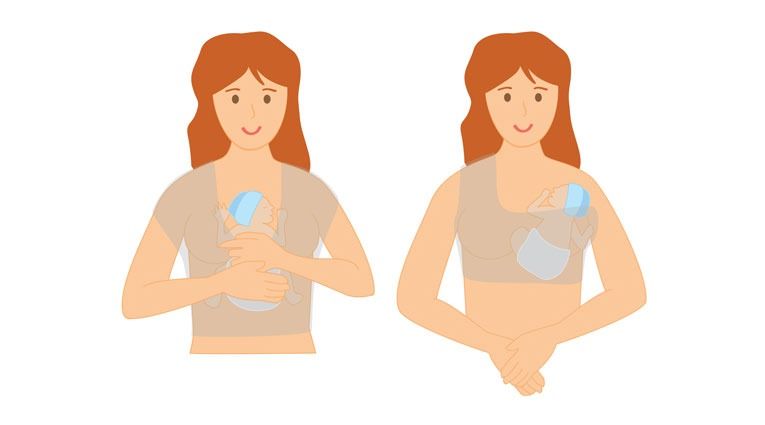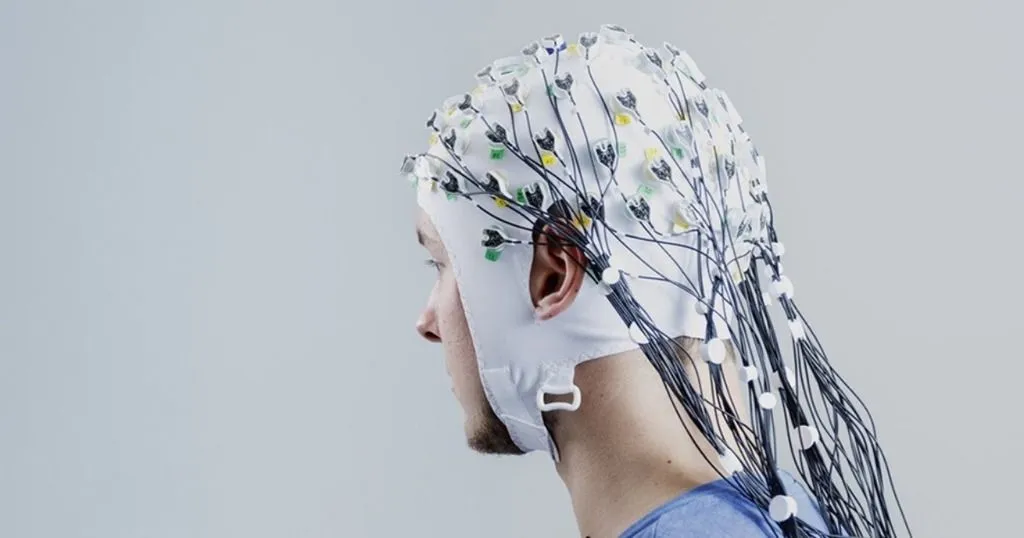Comparing two different skin-to-skin contact techniques
Skin-to-skin contact is essential in developing a feeling of safety, and in creating the bond between parent and child, especially with premature babies. Buil et al. compared two kangaroo positioning techniques.
Posted by
Published on
Wed 23 Nov. 2016
Topics
| Child Development | Eye Contact | Parent-child Interaction | The Observer XT | Video Observation | Infants |

Three times I have experienced how it feels to hold my newborn baby in my arms. To feel that warm, small, naked body on top of you, the baby that is yours and grew inside you…that is probably the most precious gift I have ever experienced.
The little baby that just left the warm space it has spent all those months, and now exposed to the outside world - the only thing he or she needs is to feel safe with his or her mother or father.
Feeling safe
Skin-to-skin contact is essential in developing that feeling of safety, and creating the bond between parent and child, especially with premature babies. The birth of a preterm baby often creates mental stress for the parents. The baby is so vulnerable; will it stay alive and be okay? In the first hours and days, sometimes even weeks, many worrying moments will occur.
In neonatal intensive care units (NICU’s) skin-to-skin contact is used as a multisensory care method offered to both parent and child immediately after birth. Such care has numerous well-known positive effects on the development of premature children, both physically and psychologically.
The Kangaroo Mother Care (KMC) program is an often chosen method to ensure this parent-child contact.
FREE WHITE PAPER: Parent-child interaction
This free white paper informs you how on to facilitate a parent-child study and how to set up your experiment.
- Perform tests in a lab or in-home
- Collect data with video
- Design a coding scheme
Making eye-contact with a baby
Within the NCIU at the Centre Hospitalier Sud Francilien (France), the baby was positioned vertically inside the mother’s clothes to provide that skin-to-skin contact. However, mothers often complained about the impossibility to look the baby in the face and make eye-contact.
Hospital workers decided to address this issue and implemented a new position based on a flexed body axis, with the child positioned diagonally on the mother’s chest and supported by a stretchy wrap. This position was named the supported diagonal flexion (SDF) kangaroo positioning (see the picture below: the vertical kangaroo positioning technique on the left and the supported diagonal flexion kangaroo positioning on the right).
It would ensure that parents were less preoccupied by the fear of the baby slipping, more relaxed in order to interact with their baby, and more able to make eye-contact and still have good skin-to-skin contact. All this was hypothesized to result in improved well-being of both the parent and the baby.

A study using kangaroo “supported diagonal flexion” positioning
Fifteen mothers and their premature babies (the mean gestational age of the children at birth was 29.3 ± 2.5 weeks gestation) were assigned to one of the two kangaroo positioning modes: either the current vertical positioning or the new SDF positioning. Physiological variables such as heart rate, respiratory rate, oxygen saturation, and all critical events of the babies were recorded automatically before, during, and after each skin-to-skin session.
Ten sessions of skin-to-skin contact were scheduled, with the first and last sessions recorded to allow behavioral measurements. The Observer XT was used to code and analyze these video recordings. Mothers’ risk for depression and feelings about the way they experienced communication with their baby were assessed through questionnaires.
FREE TRIAL: Try The Observer XT yourself!
Request a free trial and see for yourself how easy behavioral research can be!
- Work faster
- Reduce costs
- Get better data
Results show positive effects
During the skin-to-skin sessions, significant decreases in heart rate and respiratory rates were measured in both groups, suggesting that skin-to-skin contact in general helps the baby calm down. The researchers did not find any negative effects associated with the SDF positioning in comparison with the usual vertical positioning.
SDF positioning led to a reduced amount of restlessness, fewer negative vocalizations, and drowsiness of the babies, in favor of more deep sleep. The skin-to-skin sessions also lasted longer in the SDF group than in the vertical group.
Mother-child interaction
The mothers in the SDF group tended to look more at their child’s face and looked elsewhere less. Clearly, these exchanges were less effortful for both the baby and the parent in this position. Not only did the mothers look more at their child’s face, but they also spent more time smiling at and talking to their child.
The mothers appeared to feel more comfortable in a position that allows for face-to-face contact. A simple change in positioning has immediate and obvious benefits.
Overall, this study highlights the positive impact of the kangaroo SDF positioning technique, in terms of early mother-child interaction. The technique is physiological safe and improves the well-being of both the parent and the child. It’s an innovative, inexpensive, and easy-to-use technique in daily practice by all healthcare professionals working in a NICU.
Reference
Buil, A., Carchon, I., Apter, G., Laborne, F.X., Granier, M. & Devouche, E. (2016). Kangaroo supported diagonal flexion positioning: New insights into skin-to-skin contact for communication between mothers and very preterm infants. Archives de Pédiatrie, Volume 23, 9, 913-920. https://doi.org/10.1016/j.arcped.2016.04.023
Related Posts

Early exploratory behavior in infants with Down syndrome

Understanding face perception in ASD
